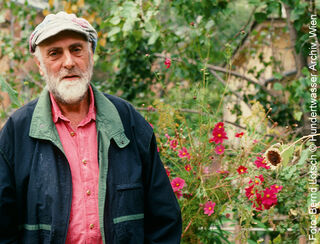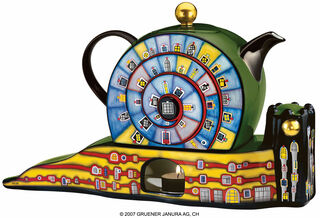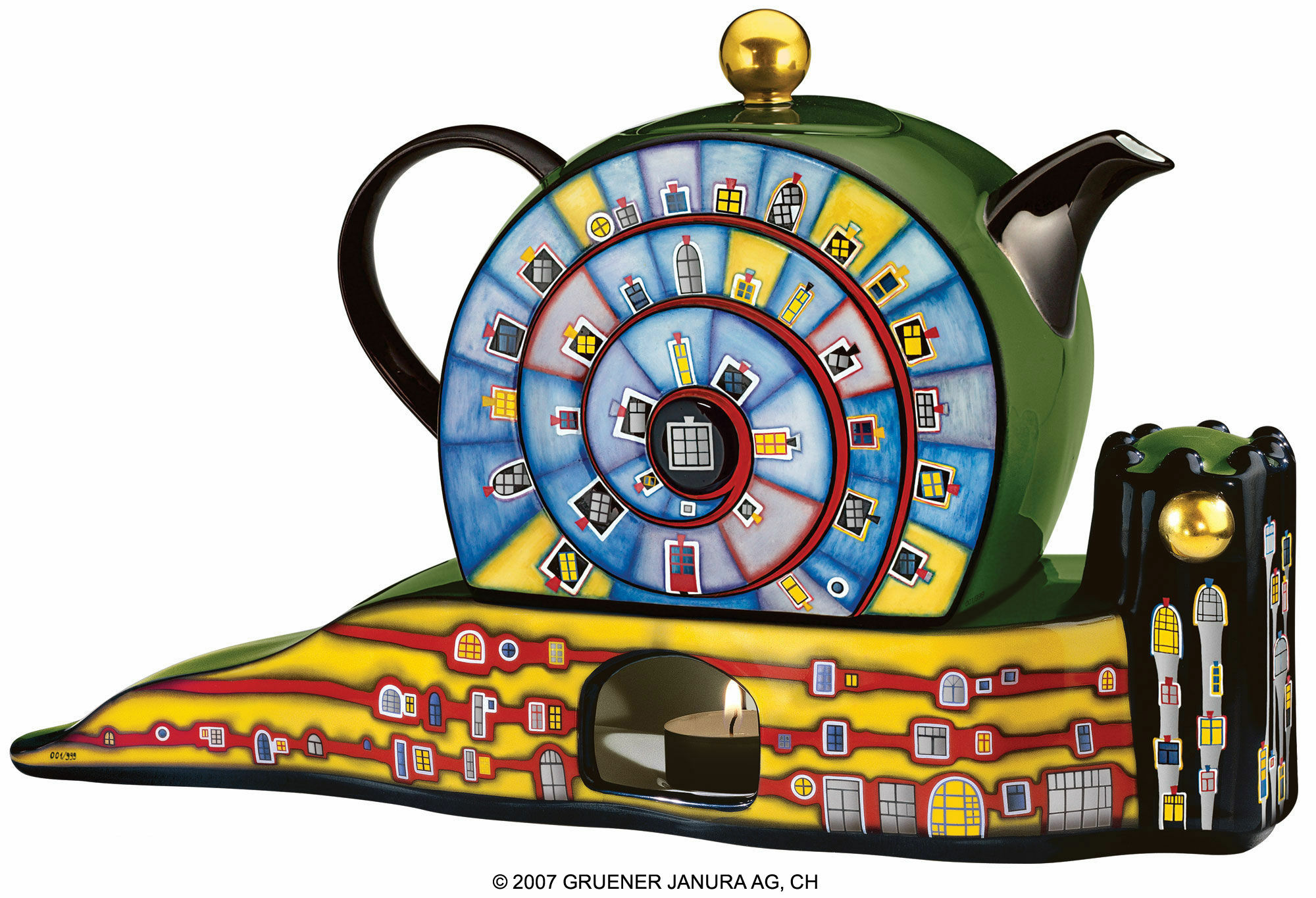"Snail Object"
"Snail Object"
Quick info
limited, 999 copies | numbered | porcelain | hand-painted | certificate | gift box
Detailed description
"Snail Object"
The inspiration for the snail object was the "mountain snail", which Hundertwasser designed as a landmark for the thermal village of Bad Blumau. He designed the hotel complex as an architectural example that harmonises with nature. He realised the complete grass and forest covering of the roofs through various architectural forms such as the Eye-slit houses, the Forest-courtyard house and the Rolling-hills houses.
Hundertwasser's pictures and architecture touch many people's deep-rooted longing for beauty and diversity. He also designed objects of everyday life: "One must enjoy owning these things and must admire and honour them, also because one always discovers new contents..."
Factory number incl. teapot warmer: PM IV Snail object.
Snail jug: size 13.4 x 9.8 x 16.3 cm (l/w/h), capacity 1.15 l.
Teapot warmer body: size 27.8 x 9.5 x 11.3 cm (l/w/h).
Overall size of the snail object: 27.8 x 9.8 x 23.0 cm.
Tettau manufactory object, hand-painted according to Hundertwasser's designs and decorated with gold, silver and platinum elements. Limited and individually hand-numbered world edition of 999 copies.
With numbered certificate of limitation and authenticity, in an elegant gift box.
Copyright 2007 GRUENER JANURA AG, CH
The displayed works of art are protected by copyright. In particular, it is not permitted to copy, edit, print or publish these illustrations. Violations will be prosecuted according to civil and criminal law.
Customer reviews
Super sicher verpackt, schnelle Lieferung

About Friedensreich Hundertwasser
1928-2000
Hundertwasser is one of the most internationally renowned artists of our time. His worldwide reputation was already established in the 1960s. Followed by an eventful and evocative career. His aura and power emerged from his painting and multifaceted work.
Organizing demonstrations, speeches, happenings and campaigns, addressing ecological issues, advocating a life in harmony with nature, manifestos for nature, standing up for a more humane architecture and the improvement of people's lives.
Hundertwasser originated projects such as the tree tenants, the roof afforestation, the regreening of cities, the humus toilet, the restoration of social values and the natural cycles. He was an admonisher against environmental pollution, against the dangers of nuclear energy, against natural degradation and the destruction of natural heritage, and in favour of a waste-free society.
Hundertwasser has been engaged with architecture since the 1950s. On the occasion of the inauguration of the Hundertwasser House of the City of Vienna (1986), he said: "We are again experiencing a turning point where old and rigid values in architecture and urban developement are increasingly being questioned. The straightness and uniformity of Bauhaus architecture is coming to an end because it is callous, sterile, cold, heartless, aggressive and emotionless. The era of absolute rationalism is coming to an end. The new values are enhanced quality of life, not standard of living. Longing for romance, individuality, creativity, especially creativity and living in harmony with nature."
With Friedensreich Hundertwasser, our epoch has found the most imposing challenger of totalitarian thinking, whether it concerns nuclear energy, genetic manipulation, environmental protection or the design of our living space. Hundertwasser lived completely in harmony with his view of things and opposing the contradictions of post-industrial society. Hundertwasser's significance is his art that produces beauty: a message of natural harmony, peace and joy.
Graphic or sculpture edition that was initiated by ars mundi and is available only at ars mundi or at distribution partners licensed by ars mundi.
Ceramic product made of kaolin, quartz and feldspar.
Porcelain is formed by turning or pressing and figurative objects are cast. Complex objects have to be cast in separated steps and sections and then "assembled". After the moulding, the pieces are dried and "annealed" at about 900 °C. Next, the glaze will be applied and fired at temperatures between 1,240 °C and 1,445 °C. In renowned manufactures, the porcelain is painted by hand whereby each colour has to be fired individually and in compliance with narrow temperature tolerances.
Porcelain was invented in China and became widespread in Europe from the 16th century onwards. The first European porcelain factory was founded in Meissen, Germany in 1710.
Other famous European porcelain factories include Fürstenberg, Höchst, Schwarzburger Werkstätten, Lladró, Nymphenburg, KPM, Augarten, Sèvres, Limoges, Royal Copenhagen, Worcester. Individual factories label their products with their personal porcelain stamps so that for the collecter it is easy to identify their origin.


